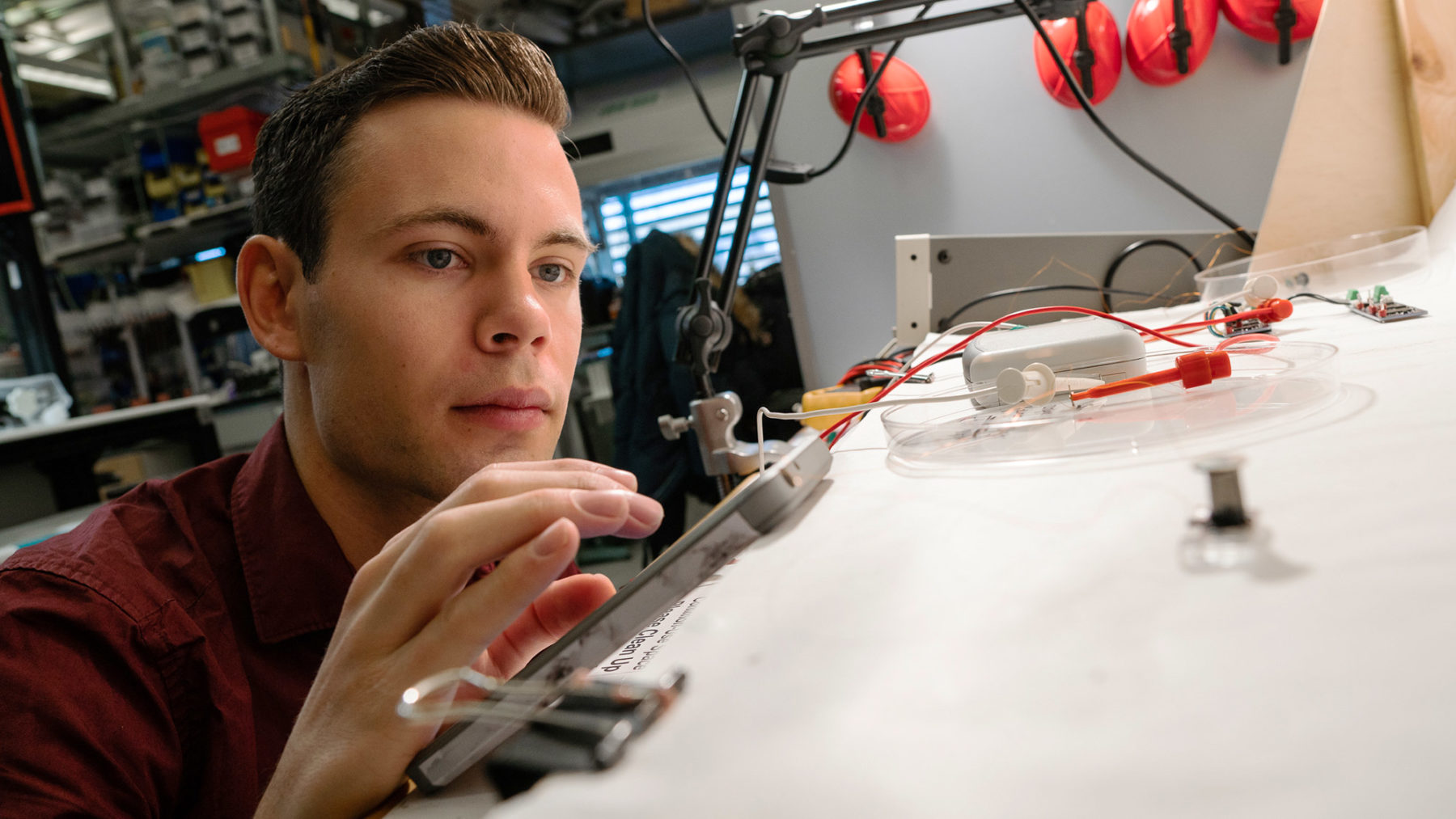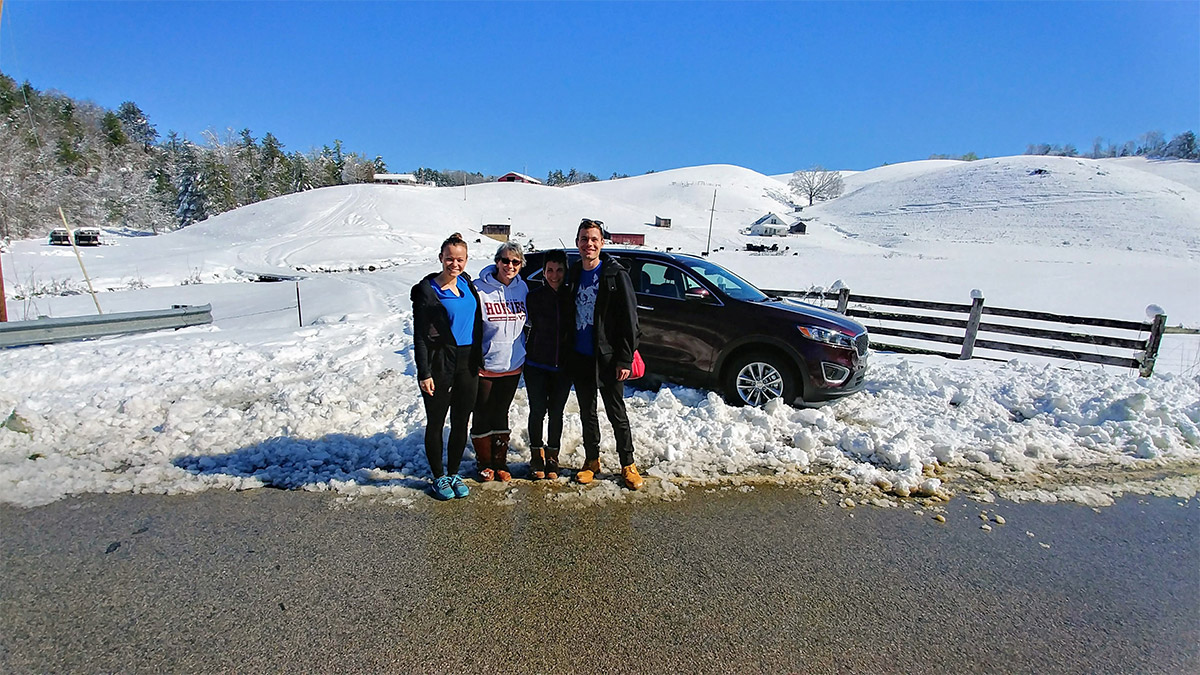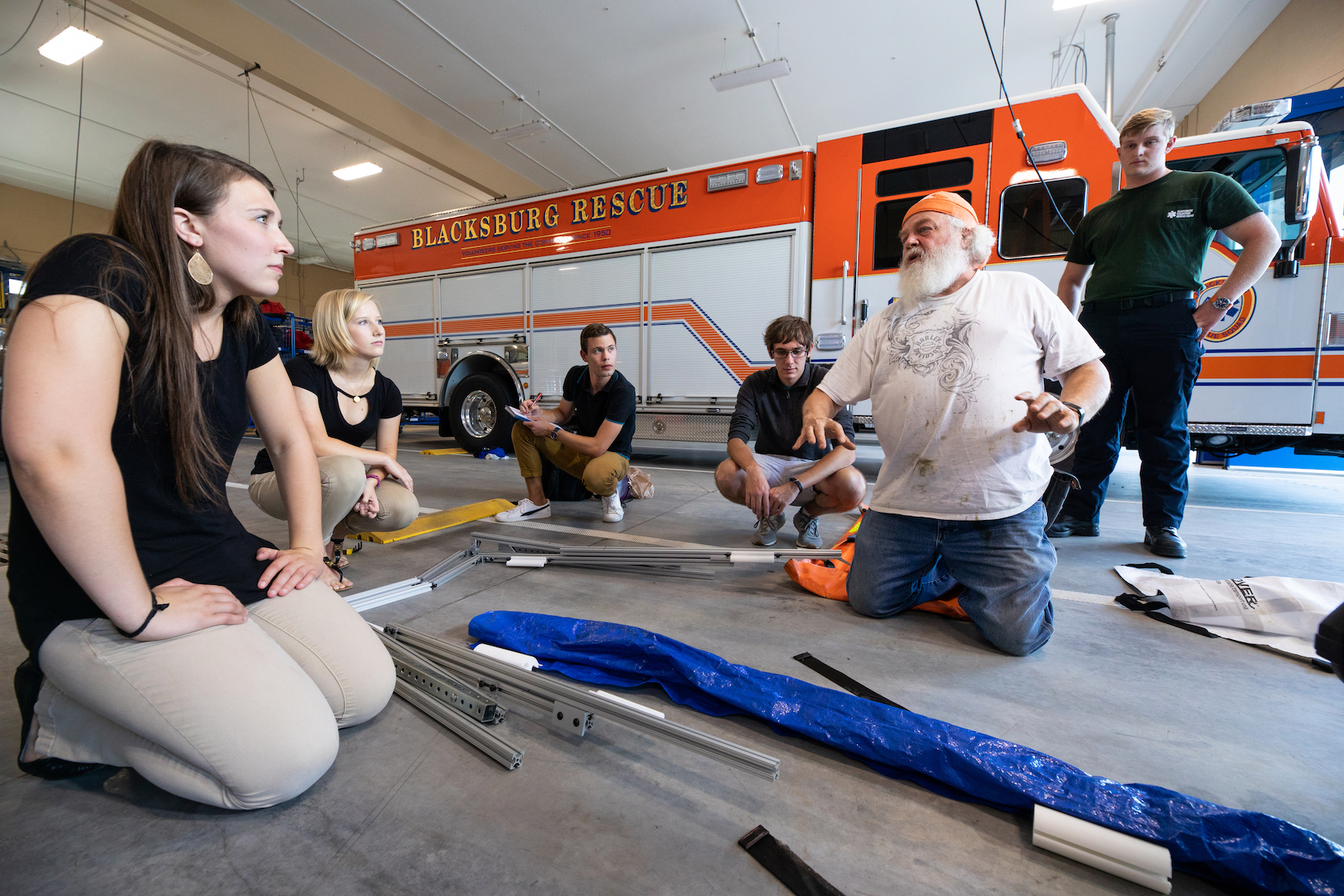
Photo by Sophie Park
Building connections
“You have to design for people and you have to talk to people.”
Engineers love to build things, Andy Cohen says, but the things themselves aren’t really the point.
“Engineering is being able to apply scientific principles to a human-relevant problem,” said Cohen, who is in his second year of a mechanical engineering doctoral program at Harvard’s Graduate School of Arts and Sciences and the John A. Paulson School of Engineering and Applied Sciences.
It’s a lesson that was brought home last year when he got stuck in a blizzard on his way back to school at Virginia Tech in Blacksburg after visiting Harvard to research the doctoral programs.
Stranded in the Charlotte, N.C., airport, he persuaded some other passengers to rent a car with him and drive the last leg back to Virginia.
“One thing you should know about me is that I attract travel disasters,” he said.
The group, forced off the highway onto a back road because of a road closure, soon got stuck. They ended up being taken to the fire and EMS station in tiny, rural Floyd, Va., to wait out the storm.
Over breakfast the next day, Cohen struck up a conversation with Ann Boyd, first lieutenant personnel of the Floyd EMS. He told her that his college biomedical design team was working on developing an emergency lift system for patients.
“We did a ton of market research,” Cohen said. “The most shocking stat we found was that one in four emergency medical technicians will suffer a career-ending injury on their first four years of the job. It’s insane.”


Cohen and his fellow passengers coming back to dig their car out the day after the blizzard.
Photos courtesy of Andy Cohen

Cohen and the biomedical design team demonstrate the functionality of an early lift assist prototype and get feedback from the Blacksburg Virginia Fire and Rescue.
Photo courtesy of Peter Means
Boyd was interested, so a few weeks later Cohen and the design team brought their lift system prototype to Floyd and received invaluable feedback about concerns the students hadn’t considered, like size restrictions in homes or at an accident site. Then Boyd put the student team in touch with a network of other EMS organizations in Virginia, and the team began to design in collaboration with user feedback.
For Cohen, the experience was a reminder that in the end, the work of an engineer is to make people’s lives better and safer.
“Most engineering schools will teach you that the first step is determining engineering requirements,” he said. “That’s kind of right, but I also think it’s extremely wrong. The first step is talking with people.”
And Cohen is carrying those lessons into his current research in bioinspired robotics.
“Right now we have robots that work very well in confined environments — warehouses, factory lines. What we don’t have is robots that work well in the field. What I do is look at how soft animals inspire better robots. For example, animals are really good at grasping things; robots are not.”
Cohen said that, by mimicking the soft but strong aspects of animal muscles, robotics might be able to work better in real-life situations. “Things like medical robots working right beside you. Maybe it’s helping in a hospital to lift a patient.”
“In 10 years I would love to be the head of my own robotics company,” Cohen said. “I would love to start something — and this is so cliche at this point — that does make a difference.”
This story is part of the To Serve Better series, exploring connections between Harvard and neighborhoods across the United States.





